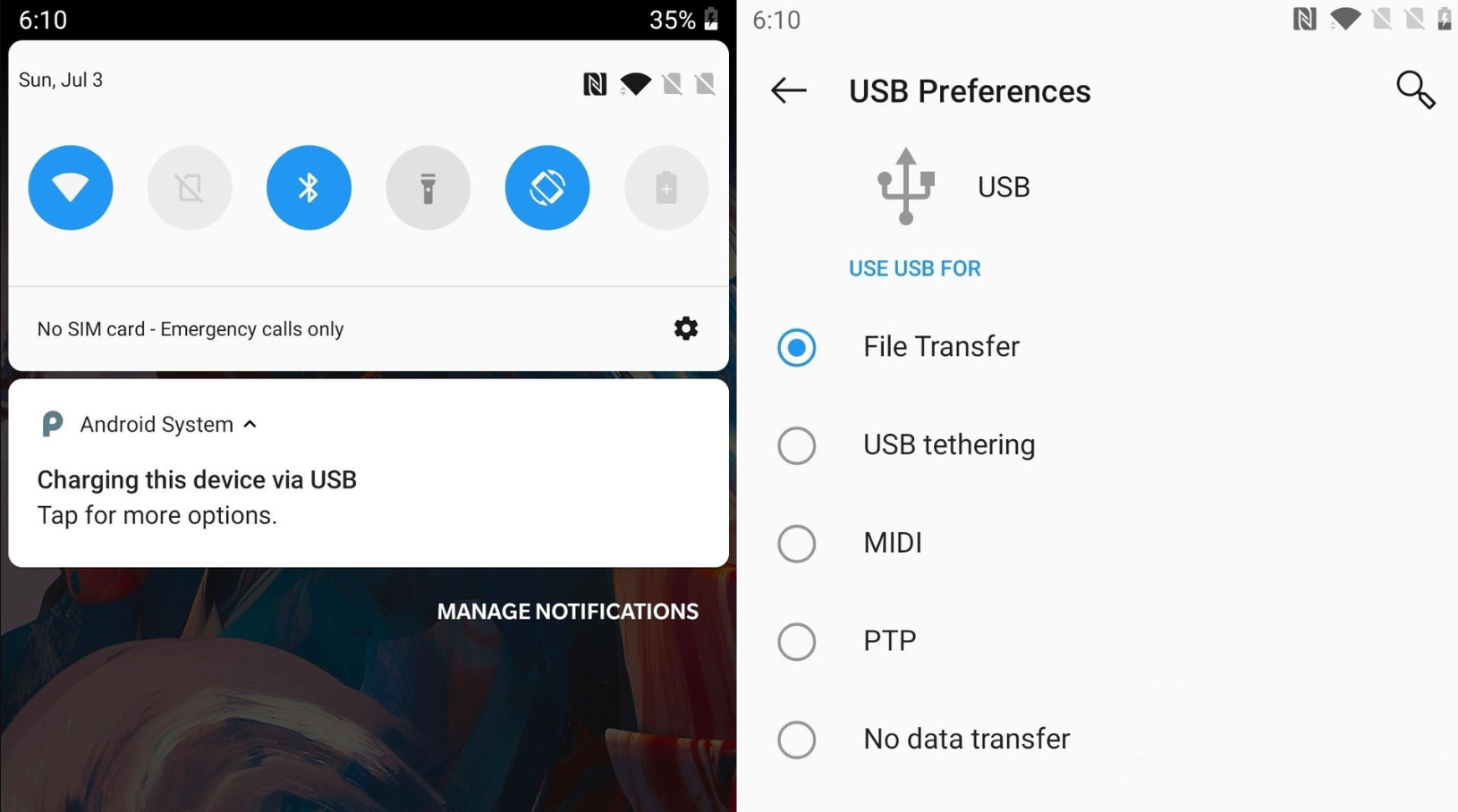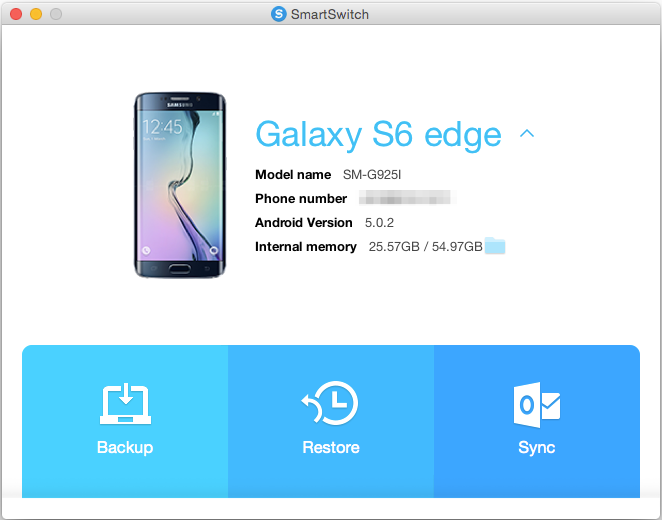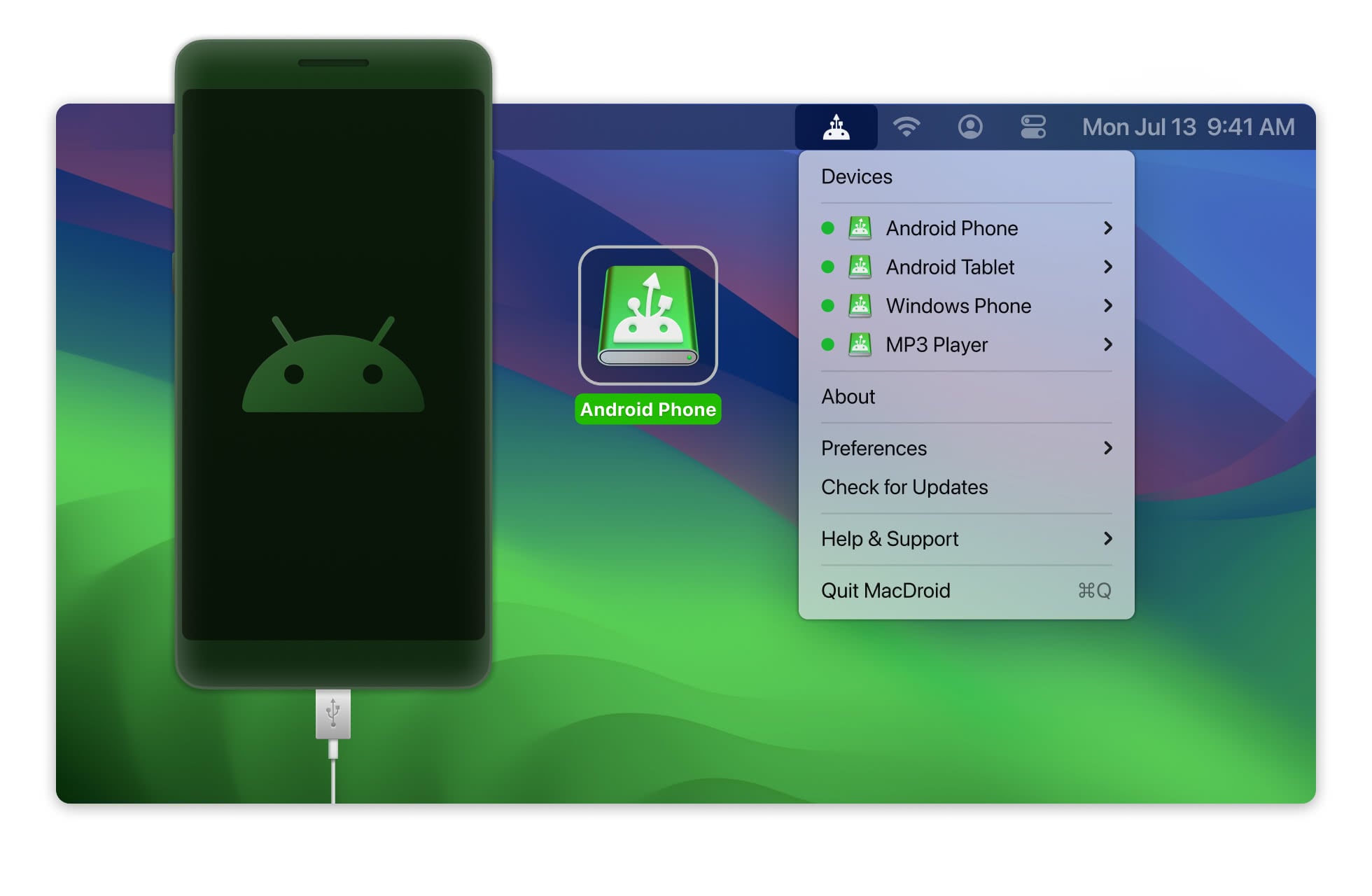6 Ways To Fix Android File Transfer Not Working Issue
Android File Transfer is perhaps the oldest and most reliable Android file transfer app available, most of the time, at least. Unfortunately, there are times where this program simply does not work correctly, especially on Mac computers. If you have experienced the dreaded “Could not connect to device” error message that appears as a result of Android File Transfer not working, there are several possible issues to consider, each with its own range of solutions. However, the good news is that the core problem is usually fixable.
Best ways to deal with Android File Transfer Not Working Issue
Here, you’ll find explanations of the top seven issues that result in an Android File Transfer error, as well as the best solutions for each problem. Keep in mind that you may have to try multiple solutions.
Restart Your MacBook
Some Android File Transfer Mac problems can arise from the simple software issues that stem from running your MacBook for too long without a restart. There’s a good reason that “turn it off and on again” is a strong first step for any technological troubleshooting: Restarting any device will terminate any processes that may be running incorrectly or conflicting with each other, and it will also clear any temporary files that may be interfering with Android File Transfer. You might also want to restart your Android device for the same reasons stated above.
Reinstall Android File Transfer on Your Mac
The most recent version of Android File Transfer should be the most stable, up-to-date, and compatible with your Mac’s software. If Android File Transfer is failing to update or retrieve the most recent data, uninstalling (and then reinstalling) the program on your computer can fix the problem. To reinstall Android File Transfer on your Mac: drag the Android File Transfer icon to the Trash from Finder, go to the official Android File Transfer website, download and install the app. Once you have reinstalled Android File Transfer, try connecting your Android again. If it still isn’t working, feel free to move on to the next solution.
Activate File Transfer Mode on Your Android
If Android File Transfer doesn’t work, you will most likely see a message that asks you to unlock your device and make sure that “File Transfer” (or “MTP”) mode is enabled. This is a process that is going to look a bit different depending on your Android device and operating system, but the general overview should be similar:
- Attach your Android’s charging cable to the Android, then plug it into your Mac.
- Unlock your Android, then wait for a pop-up notification regarding the USB connection (you may need to pull down the notification shade to access it); tap the notification.
- Make sure the checkbox or toggle switch next to “File transfer” is in the “Yes”/“On” position.

Note that your phone may not send you a notification or acknowledgement that you have plugged it into your Mac. If this is the case, your phone’s specific settings could be preventing it from entering file transfer mode; read the next section about USB debugging. However, it’s more likely that your USB cable (or the port into which you plugged it) is damaged.
Remove Smart Switch or Samsung Kies
Smart Switch and Samsung Kies are data transfer services that are installed as a default pack on some devices; like Copy My Data and other third-party apps, they serve as built-in file transfer options. While each proprietary app has something useful associated with it, they can also clash with Android File Transfer’s software, preventing the droid transfer app from working correctly. Even when both your phone and your Android manager software are updated, problems can arise if either of these apps is installed.
You can usually uninstall both of these apps from the home screen. You can also uninstall apps from the Google Play Store and your Settings app. Both Smart Switch and Samsung Kies are usually only installed by default on Samsung devices, so only Samsung users need to worry about this solution.

Update Android OS and macOS on Your Devices
Interestingly, the “Android File Transfer could not connect to device” error can sometimes arise because your Android and/or macOS device is not up to date. This is easy enough to fix if there is an update available for either device. To update Android OS, open the Settings app → System section. Depending on your phone, you may need to open additional menus after this to find the “Update” section. Find and tap Software update → if an update is available, tap the Install button and follow any on-screen prompts.
To update macOS, go to System Settings → click General → Software Update. If it is available, click Update Now next to the most recent update. If you do not see this option, you either do not have an update available or your computer is not connected to a network.
Keep in mind that updating your Mac is usually a good idea; however, if the most recent version of Android File Transfer hasn’t caught up to the most recent version of macOS yet, updating can actually create more compatibility issues. The final option below offers a more robust fix for this problem.
Try Another File Transfer Option: MacDroid

Perhaps the most reliable solution to Android File Transfer issues is to use a different droid transfer app. MacDroid is our top choice; simply put, it is the only Android file manager that is built from the ground up for macOS devices, meaning it will never suffer from the compatibility issues that can plague Android File Transfer and similar apps. It also offers ADB mode for advanced users who want to access system files, while the interface is intuitive and easy to use for Android owners of any level.
MacDroid has a free version, a Pro subscription costs $19.99 per year. However, this android transfer program makes up for its price tag with its specialization for Mac, simplicity of use, and its plethora of advanced options. Macdroid supports newer macOS versions starting with macOS Ventura. This is a good Android File Transfer alternative.
How to Connect Android to Mac with MacDroid
MacDroid is extremely easy to use once it’s set up, though you will need to observe all of the usual Android norms – unlocking it, enabling file transfer, and so on – in order for it to work. To use MacDroid with your phone, follow these instructions:
- Download and install MacDroid
- Unlock your Android and connect it to your Mac with a functional USB cable, then select the “File transfer” option when prompted to activate MTP mode
- MTP mode status appears as a drive in Finder
At this point, you should be able to access your Android’s files from within the MacDroid window. Keep in mind that the free version of MacDroid does not let you move files from your Mac onto your Android, but you can move files from your phone to your computer with no problem.
Common Reasons Why Android File Transfer Not Working
There are a few common reasons for Android File Transfer to fail when connecting your Android to your Mac, especially if you’re using Android File Transfer with macOS Ventura.
- File transfer issues: If you don’t select “File transfer” as an option when connecting your Android to your Mac, it won’t show up in Android File Transfer’s list of devices. If you never see this option to begin with, you may have to enable it by default in the “USB Debugging” section of Developer options.
- Broken USB cable or port: As simple as it may sound, a frayed USB cable or a worn-out USB port can be enough to prevent data from transferring, even if your device still charges or recognizes a connection with your Mac.
- Old or outdated devices: If your Android is below a certain OS number, it may not be recognized by Android File Transfer. Androids using an OS below 3.0 will not be able to use any kind of file transfer, nor will Macs running macOS 10.7 or earlier. Similarly, both your Mac and your Android device should be updated to the most recent version of their respective operating systems to avoid any compatibility errors.
- App conflicts: Some apps, like Samsung Kies or Smart Switch, offer file transfer options; these can clash with Android File Transfer, causing it to return an error when attempting to connect to your Android device. The above programs are specific to Samsung devices, but other Android devices may have similar apps or services that interfere with the file transfer connection.
Note: Occasionally, on some phone models, you may need to use USB debugging to transfer files. This is a somewhat involved process that has a couple of components; you’ll need to start with enabling Developer options, which may look different depending on your phone:
- Open Settings on your Android, then find and tap the About phone option.
- Find the “Build number” value, then tap it seven times; you should see a notification that says something about being a developer appear (if you don’t, keep tapping until you do).
- Go back to the prior menu, then tap the new Developer options section. This may be named different things on different devices, but it should always reference “Developer” in the title.
In the Developer options area, you should see a section that references “USB” options. Open this, then select the “File transfer” or “MTP” option in the resulting menu. This will ensure that your phone always puts itself in file transfer mode when you connect it to a computer via USB cable.
Conclusion
All of the most-common problems associated with Android-to-Mac compatibility have clear and simple solutions, none of which are too time-consuming. Certainly, being able to quickly and reliably access and manipulate the files on your Android via your computer without needing to troubleshoot is a huge benefit, which is why we recommend sticking to MacDroid instead of trying to force Android File Transfer to work correctly; since MacDroid is built for macOS and Android compatibility, it is inherently better suited to things like operating system updates. However, fixing Android transfer complications is relatively painless regardless of the specific issue you face.
